Attendees at the San Mateo event participate in ice-breaking exercise
When you’re working with people who've had a lot of childhood and adult adversity, it’s hard for you to believe that anyone else can have a bad day, says Laura van Dernoot Lipsky. “Your neighbor or your best friend says: ‘I’ve had a bad day.’ And you think, ‘Oh, I’m sorry you had a bad day; were you sex trafficked today? No, you were not!'”
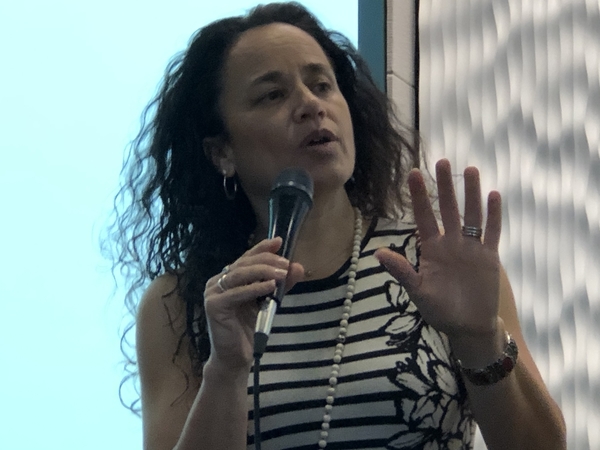
Van Dernoot Lipsky, the author of Trauma Stewardship: An Everyday Guide to Caring for Yourself While Caring for Others, was driving home one of several points of how working in a job that serves severely traumatized people can harm people who help them, too.
Van Dernoot Lipsky was speaking to about 180 people on Monday at “A Culture of Care: Trauma-informed Practices for Family-serving Systems”, an event organized by First 5 of San Mateo. The audience included mostly social service, child welfare, and behavioral health providers who serve children and families hard hit by trauma.
The event — the first big meeting organized by San Mateo’s ACEs initiative — was two years in the making. It began with surveying leaders in San Mateo County from across the sectors of pre-school through high school, social services, child welfare, behavioral health, health care, and probation to see what they wanted to do to support early child mental health. With $450,000 in funding from First 5 and the Mental Health Services Act, the long-term goal of the effort is to embed trauma and resiliency-informed policies and practices at every level of the system, according to the event organizers.
Van Dernoot Lipsky asked the crowd for ways that trauma exposure can show up on the job. “Exhaustion!” said one person.
“The feeling of exhaustion,” repeated van Dernoot Lipsky. “You’re tired in spirit, tired in your bones, you come from tired ancestors,” she said as a wave of laughter circled the room. “One of my colleagues in Colorado said, ‘It’s gotten so bad on my team that if anybody looks like they showered or put in any time on their physical appearance, we just assume that they have a job interview.'”
She reviewed a constellation of other ways of trauma-exposure at work: Addiction, feeling hopeless and helpless, a sense that we can never do enough, anger, fear, guilt and the inability to listen or empathize.
And then she pivoted to strategies for dealing personally and professionally with trauma on the job. Van Dernoot Lipsky reads the caption from a slide of a psychiatrist asking a chicken lying on a couch, Why do you think you crossed the road? and said: “I would encourage you every single day to ask yourself: ‘Why am I doing what I’m doing?’ Unless you’re being persecuted on the job, you really want to remember, ‘I can choose to do the work differently. I can choose to not do it.’” said van Dernoot Lipsky. “And honestly it’s the least you can do for the folks you are serving to have you there because you are electing to be there, not because you can’t find your resume on your hard drive.”
And, she explained, asking yourself daily why you do what you do helps buffer other distractions that cause on-the-job stress, “because it will help you turn down [the volume] of the politics in your workplace, the noise in your work place and the other B.S. you have to deal with.”
While van Dernoot Lipsky shared a number of practical tips for people to use in their work life, some local leaders explained how they’re trying to embed changes in the work environment that will buck the status quo.
One example came from San Bruno Chief of Police Ed Barberini who was on the Leadership panel. When Barberini became chief of police for the San Bruno Police Department in San Bruno, Calif., five years ago, the department had programs to help police officers deal with traumatic events they experienced on the job. But Barberini wanted to tackle the issue of trauma from another perspective.
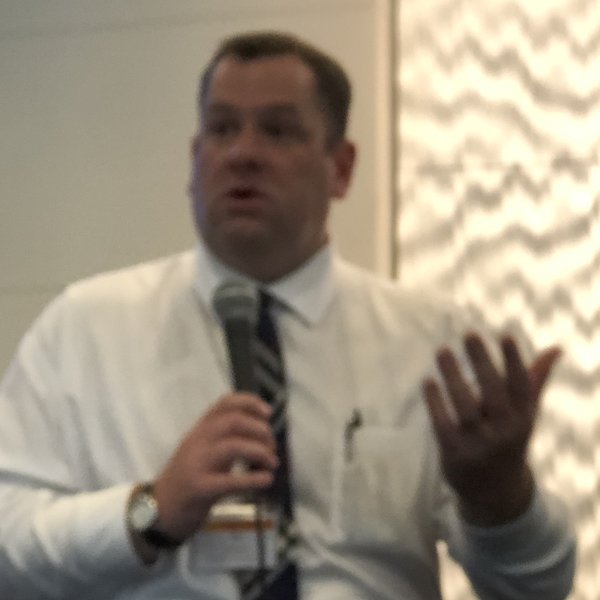
"My focus was more on the cumulative effect that trauma can have on a daily basis of going from one negative situation to another,” he told attendees. “If you begin doing that when you’re 22 years old and you do it for the next 30 years, it’s going to have a pretty significant impact on your life.”
When he first talked to the force about a program that focused on wellness, resilience and meditation, he said, “It was an out-of-the box approach to law enforcement, and I caught a lot of interesting looks. But my personal belief is if you make an individual healthier and more resilient as an individual, they’ll be better prepared to serve others.”
Today, the meditation program known as the Officer Resiliency and Mindfulness program, which started as a 2.5-day immersion program with training provided by the Mindful Badge Initiative, has made some unexpected inroads, said Barberini. “I did get a lot of pushback, a lot of cops saying, ‘Oh this is B.S., a lot of touchy-feely stuff.’ But the ironic part was that the folks who were most resistant to the training were the ones who benefited the most. I got comments, like: ‘I’m sleeping better. Me and my spouse, we have date night now once a week. I have better interaction with my kids. I have better balance.’”
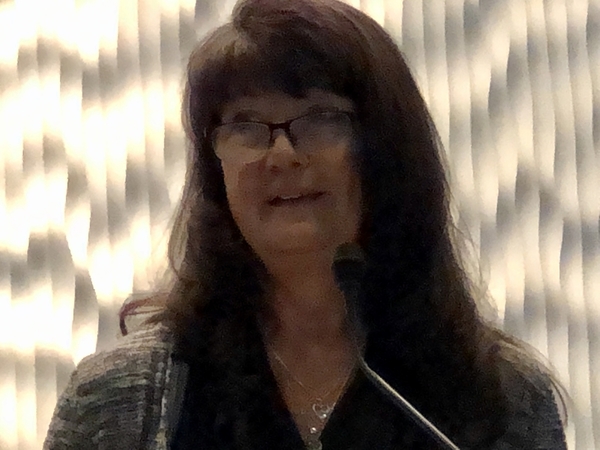
All of the leaders who spoke on the Leadership Panel with Barberini were adamant that shifting a workplace to an environment that’s responsive to its own workforce’s needs and trauma-informed to its clients’ needs is an ongoing effort. “I spent years getting eye-rolls whenever I would bring up the need for trauma-informed work,” recounted Toni DeMarco, the deputy director of Child and Youth Services, Behavioral Health and Recovery Services, San Mateo County Health, noting that county agencies in general move at “glacial speed.”
And DeMarco said that committing to systems change often means diving into situations that may be uncomfortable, but they are crucial. “We do a lot of anti-stigma work around our clients. But we are some of the worst folks around our internalized stigma,” she said, recounting a leadership training where everyone was encouraged to talk about their own experiences of trauma.
“And telling my story to some of my colleagues, knowing that some of them might think differently about me afterwards, but knowing that that was really important, because there is no us and them. And when we do trauma-informed work, there is no us and them. We are all on the continuum. And the only reason I’m here is because somebody bothered to turn around and give me their hand when I needed it in my own recovery, and that’s what my work is about — the person that’s coming up behind me.”
For more information about next steps you can contact First5 San Mateo, and join the San Mateo Community on ACEs Connection, which is managed by Mai Le, who is a program associate with First 5 San Mateo.

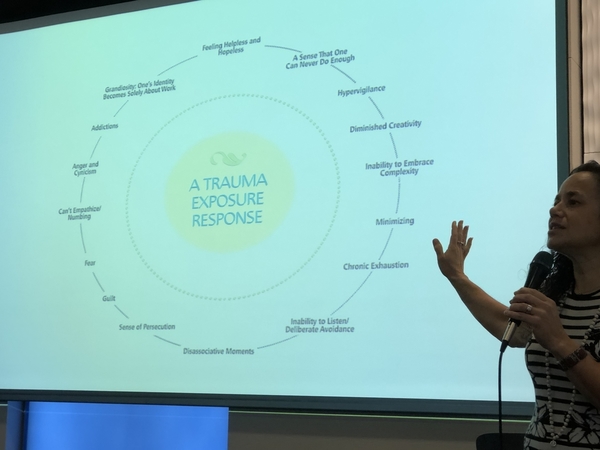
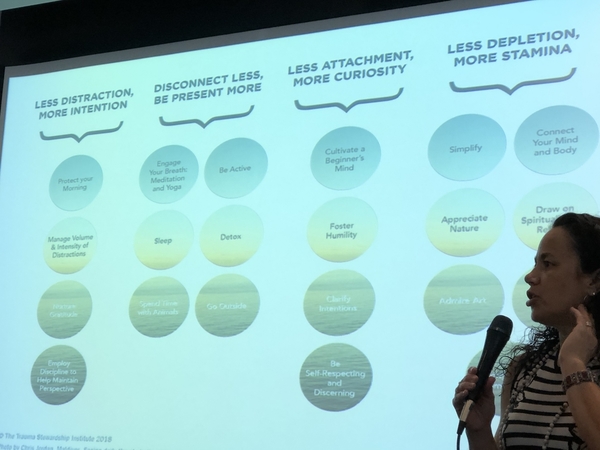






Comments (0)